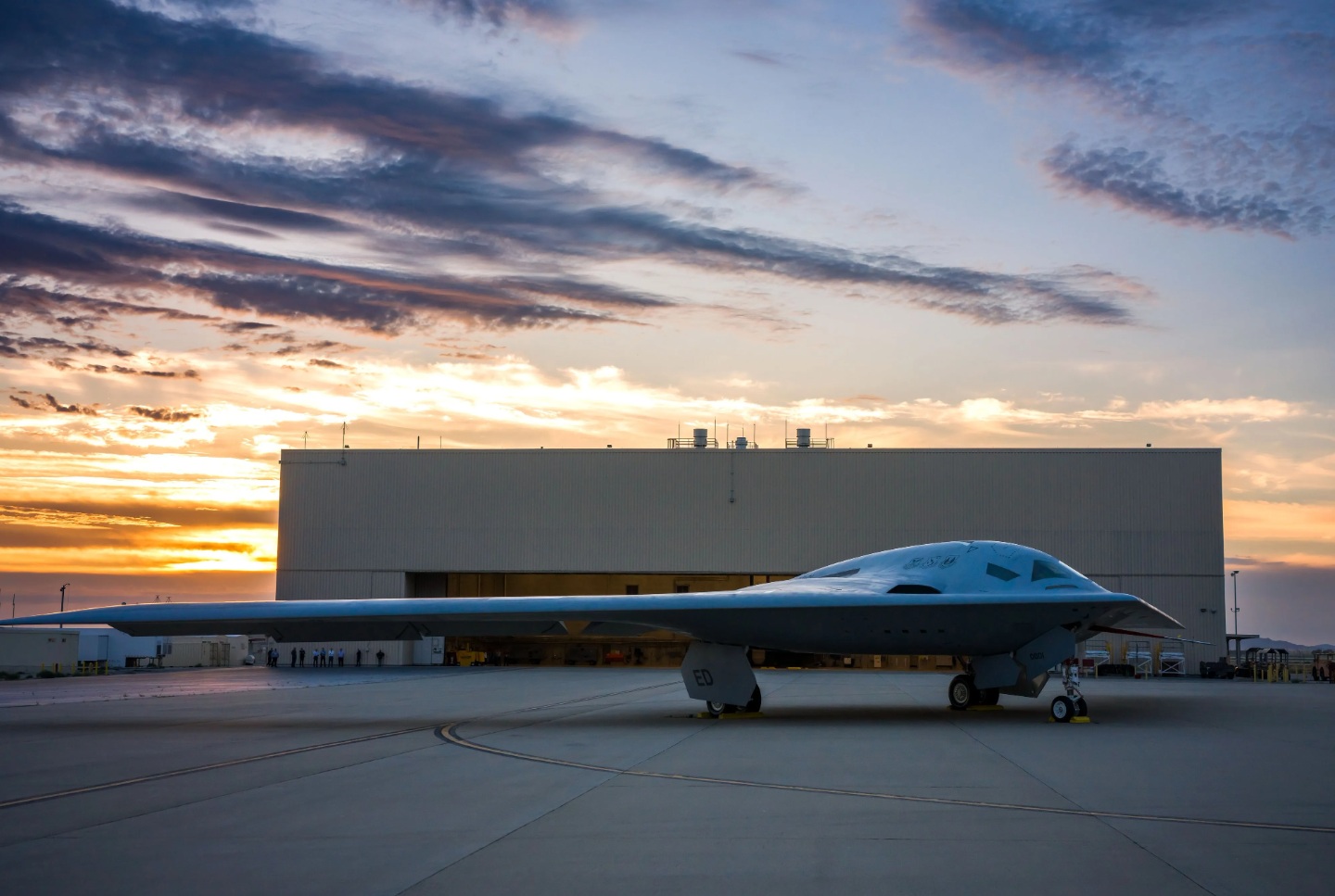A high-ranking Pentagon official announced this week that the production of the B-21 Raider has officially kicked into gear, marking a pivotal moment for the United States Air Force (USAF).
The news comes just over two months after this stealth bomber’s successful inaugural flight, signaling the service’s fast-track approach to producing this aircraft.
William LaPlante, the undersecretary of defense responsible for acquisition and sustainment, revealed that Northrop Grumman secured the low-rate initial production contract for the B-21 bomber.
“Production of the B-21 ‘Raider’ stealth bomber is moving forward,” LaPlante said in a statement. “This past fall, based on the results of ground and flight tests and the team’s mature plans for manufacturing, I gave the go-ahead to begin producing B-21s at a low rate.”
LaPlante also underscored a vital aspect of the program’s success—its commitment to designing for production and scalability from the project’s inception. He pointed out that this approach is crucial in providing a credible deterrent to potential adversaries.
LaPlante further highlighted the importance of producing and deploying the capability on a large scale, stating, “If you don’t produce and field to warfighters at scale, the capability doesn’t matter.”
The Pentagon has not disclosed the contract amount, the specific number of aircraft covered, or the precise date of the award. However, LaPlante’s statement suggests that the contract was secured before the end of 2023.
Northrop Grumman has also acknowledged LaPlante’s announcement, confirming, “Our team received the contract award after B-21 entered flight testing within the program baseline schedule.”
The company added that the test aircraft had demonstrated the B-21’s preparedness for production, meeting all flight performance and data requirements.
The Air Force has outlined its vision to deploy a fleet of a minimum of 100 B-21 Raiders, with the first aircraft slated to enter service in the mid-2020s.
Designed to replace the aging B-1B Lancer and B-2 Spirit, the B-21 Raider is expected to integrate fully into the fleet by the 2030s. This addition will complement the planned two-bomber fleet, which includes 76 upgraded B-52J Stratofortresses.
The modernization plan aims to enhance the Air Force’s capabilities and maintain a robust and versatile fleet for the evolving national security demands.
Nonetheless, the latest announcement marks a crucial step towards propelling the nation into a new era of advanced military aviation.
Fast-Track Approach Expedites B-21 Raider Production
The commencement of low-rate initial production for the B-21 Raider brings promising news, particularly in light of its vital role in future defense strategies aimed at countering China’s growing assertiveness.
The B-21, hailed by the US Air Force as the world’s first six-generation aircraft, promises a new era of capability and flexibility by seamlessly integrating data, sensors, and weapons.
Unveiled in a high-profile ceremony at Air Force Plant 42 in Palmdale, California, in December 2022, the first B-21, also known as Cerberus, achieved a crucial milestone with its first flight to Edwards Air Force Base on November 10, 2023.
Subsequent flight testing at Edwards, led by the Air Force Test Center and the 412th Test Wing, has encompassed taxiing, ground tests, and flying operations. As the first one takes flight, an additional five B-21s are currently being built, with one designated for ground testing.
The Air Force Rapid Capabilities Office oversees the B-21 acquisition program and is adopting a unique strategy that closely aligns the test aircraft with production models. This deviation from traditional flight prototyping expedited the commencement of production.

Furthermore, the Air Force is collaborating with Northrop Grumman to establish a “digital ecosystem” for the B-21 to ensure seamless integration throughout its lifecycle.
This approach involves delivering engineering and manufacturing data used in production with the aircraft. Combined with modern collaboration and maintenance tools, this strategy aims to enhance the B-21’s procurement, operation, and scalability affordability.
The B-21 program is anticipated to have a total expenditure of US$203 billion over 30 years. Each bomber in the fleet is expected to have an average procurement cost of approximately US$692 million.
Ellsworth Air Force Base in South Dakota, which currently houses B-1Bs, is poised to become the first operational squadron location for the B-21 Raiders.
Additionally, Whiteman Air Force Base in Missouri, presently home to the Air Force’s operational B-2s, and Dyess Air Force Base in Texas, another B-1B base, are slated to host Raider squadrons in the future.
- Contact the author at ashishmichel(at)gmail.com
- Follow EurAsian Times on Google News